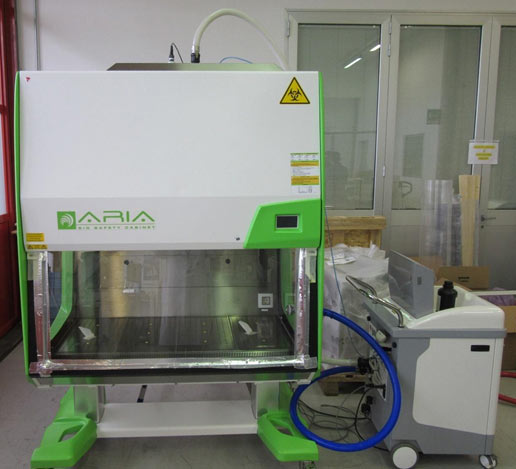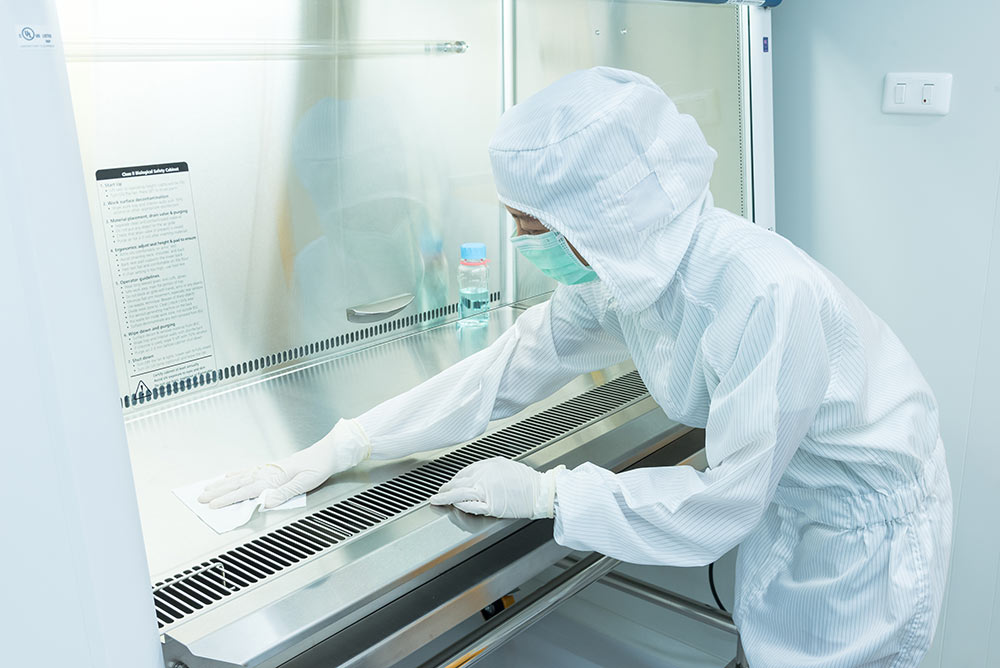There are, mainly, two different Biosafety Cabinet (BSC) decontamination types for the safety of a gnotobiotic facility. Surface decontamination which is a process carried out by spraying liquid disinfectant on all the accessible surfaces of the cabinet at the end of the working activity, since residual organic matter may provide an opportunity for microbial growth and before the day-to-day activity to avoid any sample contamination.
Total decontamination (surface + interior parts) also known as fumigation where a disinfectant in a vapor or gas state is introduced into the sealed interior of the cabinet, including through the HEPA filters (as reported in the main international standards EN12469, NSF49 and AS2252.4) to provide a 6 log killing of biological agents.

Different total decontamination methods can be used for Biosafety Cabinet (BSC); here the H2O2 “in loop” (or “closed loop”) method only is shown as example.
Prior to decontamination, cycle parameters and validation of those parameters must be developed and validated for each model and size of cabinet.
Vaporization with H2O2, according to the VHP generator used, can deliver dry or wet H2O2 requiring a dehumidification phase to prevent condensation. Once the required humidity and temperature levels are reached, a 30/35% of H2O2 solution is vaporized into the cabinet. Aeration is the last and the longest phase where the residual H2O2 is completely removed from the chamber (it can be accelerated by a catalyser to be broken down into oxygen and water, both of which are environmentally safe).
Recent Articles
- Gnotobiotic facilities: writing inside isolators 4 April 2022
- Germ-free cage sterilization 24 January 2022
- Microbiota and its importance in aging 25 October 2021
- Procedural diversity and technical choices working with gnotobiotic mice in IVCs. (part 2) 27 September 2021
- Procedural diversity and technical choices working with gnotobiotic mice in IVCs. (part 1) 30 August 2021
DVC – Digital Ventilated Cage for digital vivarium

The DVC® is capable to provide novel insights and enhance animal welfare checks thanks to the automatic data collection directly from the cage level. Specifically designed DVC® board enables different benefits for the researchers and vivarium people.

